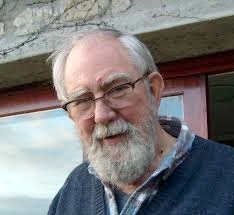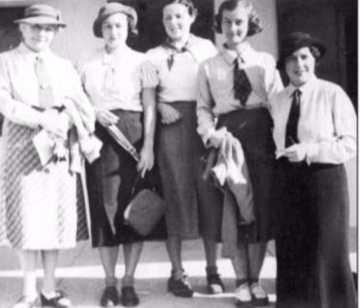
TOPIC: THE HISTORY OF THE VOLMOED COMMUNITY FOR RECONCILIATION AND HEALING SINCE 1986
February 10, 2017
The Proud legacy of Alex grant Pharmacy
February 20, 2017By Dr. Robin Lee
Individual houses feature largely in Hermanus history because of the influence that the usually wealthy owners had on the town. Just a few of these houses would include: De Mond, the first holiday home built in the early 1790s by Hendrik Cloete and visited by Lady Ann Barnard; La Gratitude, built in 1916, with ongoing connections to the South African fruit exporting industry : The Homestead, built by Duncan MacFarlane in 1860; Schoongezicht, across the road from the Marine Hotel, built in 1922 by John Luyt; Hamewith, a beautiful art deco house built by Sandy and Gertrude Grant in the early 1930s, where an ugly building of the same name now stands near the Old Harbour. All these have played roles in the history of Hermanus.
The same is true of the house called Roman Rock, in Protea Road, Eastcliff. The name originates from the phrase used by anglers in the 19th century to identify a spot where the fish called ‘red roman’ was plentiful. The adjacent site was surveyed in 1896, when it was inherited by Agnes Stroud. After a more detailed survey had divided the original ‘lot’ into seven separate plots (erven), all seven were bought by Thomas F Allen, probably a member of the Allen family that would in due course own both the Royal and Windsor Hotels.
The first house built on plot 6032 was bought by Mr. (later Sir) Frederik Philipson-Stowe. At this point in his life he was immensely wealth, having been one of the four men elected a ‘life-governor’ of Cecil Rhodes’ new company de Beers Consolidated Mines in 1888. He later broke with Rhodes, but was still knighted by Queen Victoria and ended his life in a huge country house in Sussex, England. In his will he left his estate to his son, but on the express condition that he was not to have anything to do with horse racing for at least 20 years.
The next owner was Sir Jacobus Graaff a younger son in the famous Graaff family. He is alleged to have bought the house in 1922 as a gift to a young female protégé of his, born Vera Estelle Raubenheimer, but married to the much older Earl of Cathcart. She was in Hermanus with a young aristocrat, the Earl of Craven, with whom she had eloped. They lived in Roman Rock for about three years before the aristocrat, known to all in Hermanus as ‘Uffy”, decided to give up his wicked ways and return to the family fortune. Vera was initially devastated but she had a lot of spirit and set off to America to make her fortune. There was drama when she was refused admission to the country, on account of her ‘moral turpitude’. This referred to her life in Hermanus, living with but not married to “Uffy”. Influential friends intervened and Vera went on to become a film actress and film producer in Hollywood.
Meanwhile, back in Hermanus, Roman Rock was bought by Charles Theron from Caledon. He was one of the founding partners in Guthrie and Theron, a firm that exists to this day. However, in the late 1930s the house was gutted by fire and destroyed. The Therons did not attempt to rebuild Roman Rock and instead built another house in Voelklip. The ruins of Roman Rock stood unattended for some years until, in the early 1940s, the ruin was bought by Mr. Arnold S Milne from White River in the then Eastern Transvaal. I have been unable as yet to find more information about him.
Roman Rock was next owned by Mr. Eric Westcott, a local businessman who had the Coca Cola franchise for the Overberg and owned Westcott’s Mineral Waters. His bottling plant was situated at the east end of Mitchell Street in Eastcliff, where there was a strong underground stream of clear water that could be used in manufacturing the cool drinks.
The next owner was Professor Sir James Caruthers Beattie (1878 -1946) the first Vice Chancellor and Principal of the University of Cape Town. His academic speciality was the study of geomagnetism and he had established an institute and ‘observatory’ on the campus to contribute to a geomagnetism map of the country. However, by the late 1930s electrical interference from the growing city made it necessary to move the observatory. And what better place, without a railway at all, than the Principal’s holiday town of Hermanus. In 1940 the Hermanus Magnetic Observatory opened in Hospital Street, Hermanus, under the directorship of Dr. Alexander Ogg. Now it is part of the National Space Agency.
Mrs. Maisie Beattie inherited Roman Rock on her husband’s death and she lived there until her death in 1970. The house (and an adjoining vacant plot) were auctioned in the same year. Both were bought by the Buckland family who paid R47 000 for the house and R15 000 for the plot. I visited with the Buckland family in December 2016 and shared the story so far. They will be looking for information to bring the story up to date.
Let’s summarise: this single house links Hermanus with: the MacFarlane family, influential in every aspect of Hermanus life to this day; a knighted South African who was good friends with Cecil John Rhodes, became fabulously wealthy and had a son addicted to gambling; two members of the British aristocracy, one by birth and the other by marriage, ‘living in sin’ in the house; a prominent member of the foremost Cape family, rumoured to have bought the house for a woman he was previously involved with; one of the founders of a company that has played a large role in Hermanus’ development; the man with the first Coca Cola franchise in the area; a South African knighted for his contribution to university development and responsible for bringing an international space weather station to the town.
Not bad, for a house named after an angling spot.
This article is part of the Hermanus History Society’s documenting of the history of the town. If you are interested in this work please contact Dr. Robin Lee at robinlee@hermanus.co.za
1030 words
